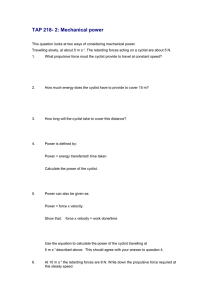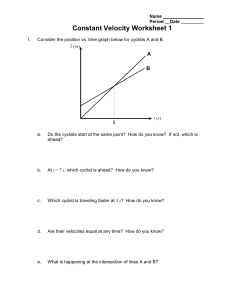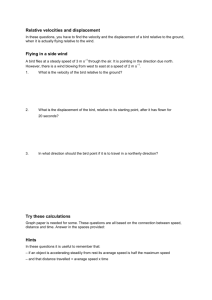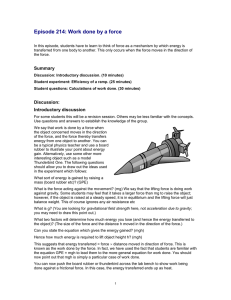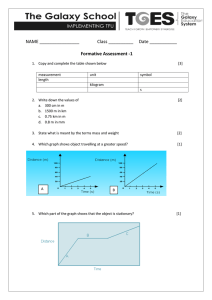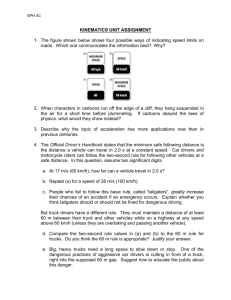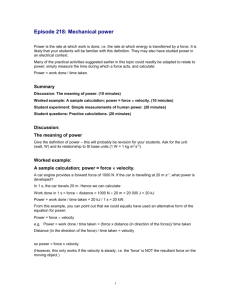Episode 214-2: Along the flat and up the hill (Word, 75 KB)
advertisement
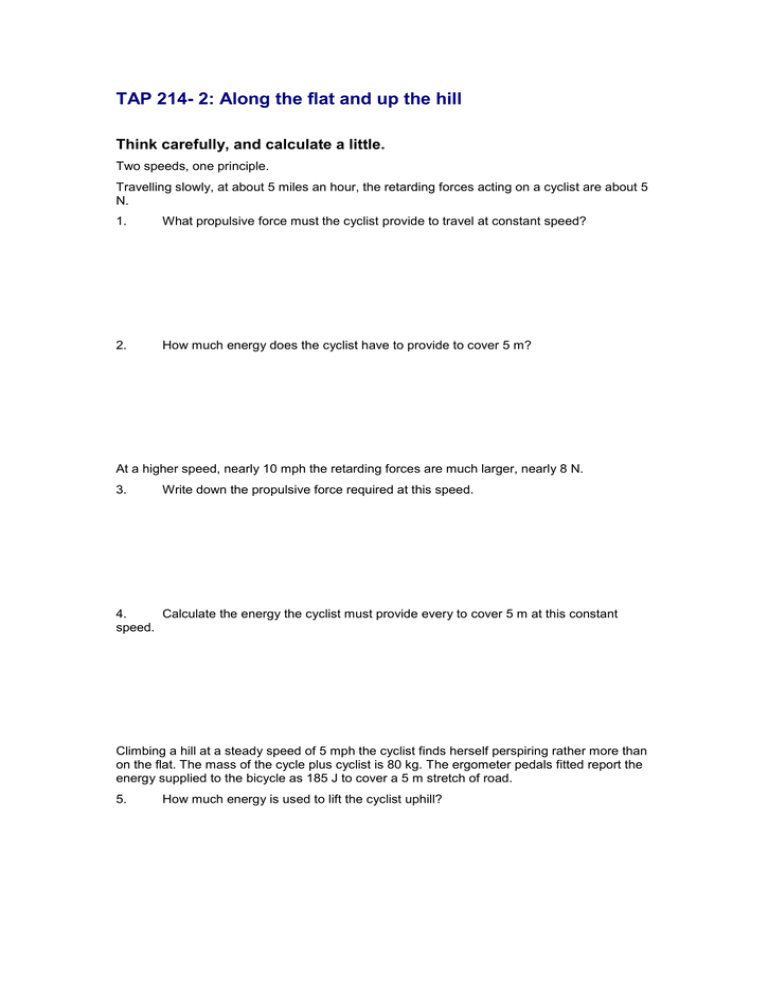
TAP 214- 2: Along the flat and up the hill Think carefully, and calculate a little. Two speeds, one principle. Travelling slowly, at about 5 miles an hour, the retarding forces acting on a cyclist are about 5 N. 1. What propulsive force must the cyclist provide to travel at constant speed? 2. How much energy does the cyclist have to provide to cover 5 m? At a higher speed, nearly 10 mph the retarding forces are much larger, nearly 8 N. 3. Write down the propulsive force required at this speed. 4. Calculate the energy the cyclist must provide every to cover 5 m at this constant speed. Climbing a hill at a steady speed of 5 mph the cyclist finds herself perspiring rather more than on the flat. The mass of the cycle plus cyclist is 80 kg. The ergometer pedals fitted report the energy supplied to the bicycle as 185 J to cover a 5 m stretch of road. 5. How much energy is used to lift the cyclist uphill? 6. How much height does she gain in travelling along the 5 m stretch of road? 7. How much energy would she have to provide to cover this same stretch of road at 10 mph? 8. What is the retarding force acting on her, when travelling uphill at 10 mph? 9. Draw a vector diagram for the retarding forces (due to drag and gravity) acting on her at 10 mph. 10. Calculate the retarding force due to the slope as a fraction of her weight. Comment on the advantages of using the slope of the hill rather than lifting bike and rider vertically by the same distance Practical advice These are intended to start at a very low level, building up to thinking about forces not along the line of movement affecting energy changes. Social and human context The energy to surmount even a small hill has appreciable effects on the power requirements. So, prior to the invention of the internal combustion engine, with its very high power / all upweight ratio, engineers had to respect the landscape, trading larger distances covered for more gentle gradients. Answers and worked solutions 1. Net force must be zero, so 5 N 2. Work force distance 5m 5N 25 J 3. Net force must be zero, so 8 N 4. Work force distance 5m 8N 40 J 5. energy to lift energy supplied energy dissipated 185 J 25 J 160 J 6. Energy transferred m g h 160 J h 80 N 10 N kg 1 0.2 m 7. energy supplied energy to lift energy dissipated 160 J 40 J 200 J 8. Energy transferre d force distance 200 J force 5m 40 N 9. drag retarding force due to gravity 10. ratio 32 N 4% 800 N External references This activity is taken from Advancing Physics, Chapter 9, Question 240W.
